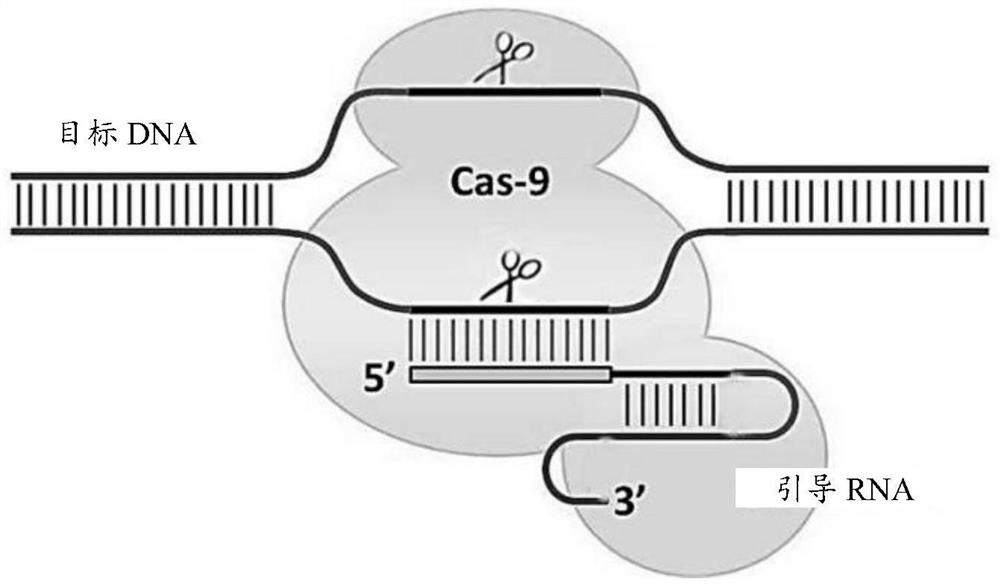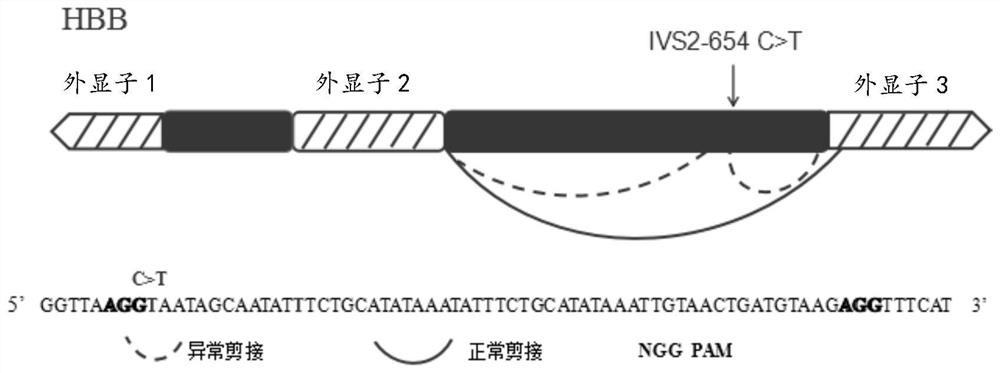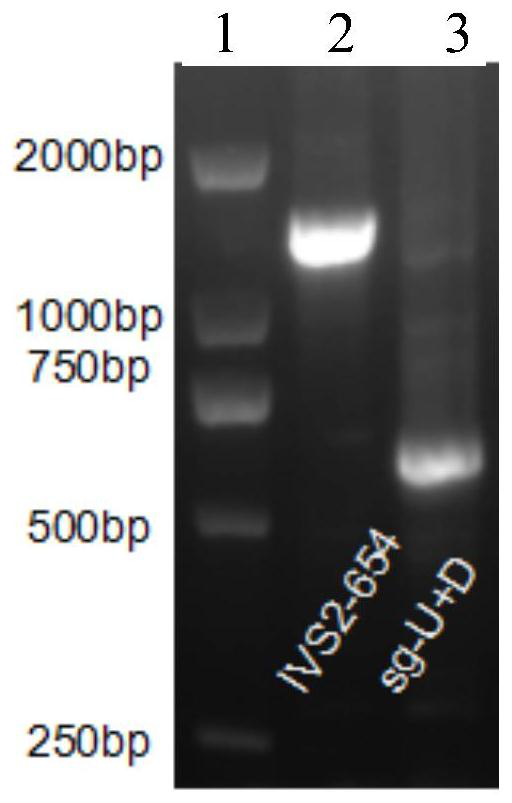SgRNA and use thereof in repairing abnormal splicing of introns
An intronic and abnormal technology, applied in the field of genetic engineering, can solve the problems of inability to achieve lifelong cure, extremely high requirements for equipment and technology, and decline in curative effect
- Summary
- Abstract
- Description
- Claims
- Application Information
AI Technical Summary
Problems solved by technology
Method used
Image
Examples
Embodiment Construction
[0019] On the one hand, the present invention provides a method for repairing the abnormal splicing of introns caused by the mutation of HBB (beta-globin gene) IVS2-654 C>T in cells, and the IVS2-654 C>T can cause additional The splice donor site of said method comprises the step of using CRISPR-Cas9 system to carry out gene editing to HBB to delete said additional splice donor site;
[0020] The CRISPR-Cas9 system includes Cas9 and sgRNA targeting target sequence;
[0021] The sgRNA includes sgRNA-U and sgRNA-D,
[0022] The targeting site of the sgRNA-U is within the range of the starting site of the second intron of the HBB gene from the upstream 21 bp of the IVS2-654 C>T site to the IVS2-654 C>T site,
[0023] The target site of the sgRNA-D is within the range from the 71 bp downstream of the IVS2-654 C>T site to the second intron termination site of the HBB gene where the IVS2-654 C>T site is located.
[0024] Further, the targeting sequence of the sgRNA-U is any one or...
PUM
 Login to View More
Login to View More Abstract
Description
Claims
Application Information
 Login to View More
Login to View More - R&D
- Intellectual Property
- Life Sciences
- Materials
- Tech Scout
- Unparalleled Data Quality
- Higher Quality Content
- 60% Fewer Hallucinations
Browse by: Latest US Patents, China's latest patents, Technical Efficacy Thesaurus, Application Domain, Technology Topic, Popular Technical Reports.
© 2025 PatSnap. All rights reserved.Legal|Privacy policy|Modern Slavery Act Transparency Statement|Sitemap|About US| Contact US: help@patsnap.com



